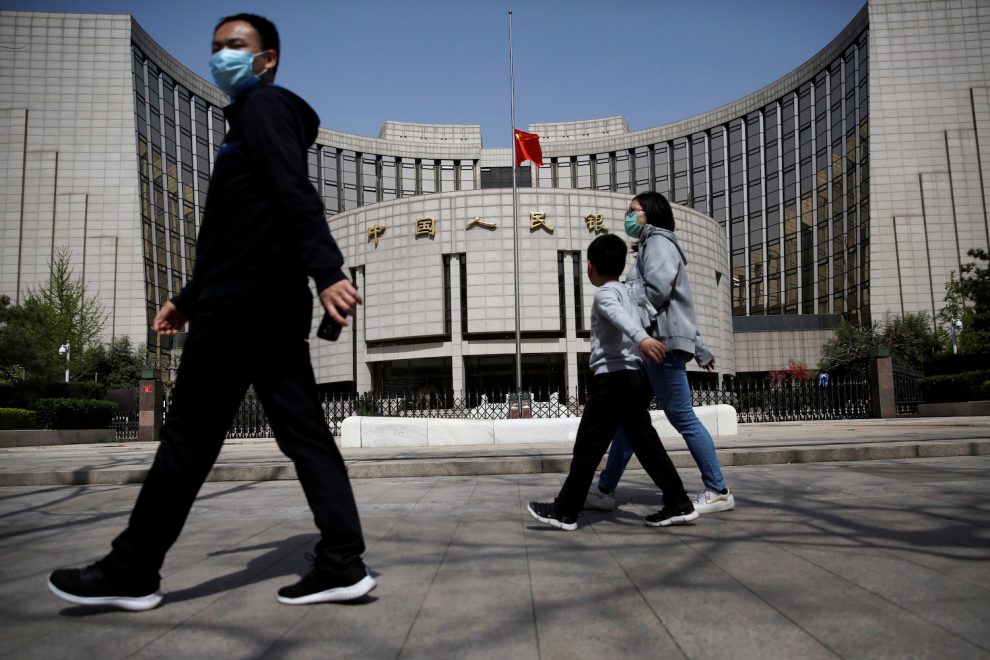A mysterious increase in Chinese government bond (CGB) holdings by unknown investors has prompted speculation that China’s central bank has bought the debt in recent months to bolster the country’s economic recovery.
The value of CGBs held by “other institutions”, typically little changed from month to month, jumped 196.49 billion yuan to 1.79 trillion yuan ($257.89 billion) in July, according to data from China Central Depository and Clearing Co (CCDC).
“There exists the possibility of central bank purchases of government bonds,” said Ming Ming, head of fixed income research at CITIC Securities said of the data in a note.
He cited the bank’s second-quarter monetary policy report last week, which called for monetary and fiscal policy to work together and to encourage smooth issuance of government bonds.
The People’s Bank of China (PBoC) cannot buy government bonds on the primary market, but is permitted to do so on the secondary market.
Heated debate
Chinese economists and policy advisers have been in a heated debate for months over whether the central bank should monetise the country’s fiscal deficit by buying government bonds, also known as quantitative easing, to support government efforts to get the economy back on track after the coronavirus crisis.
But other market players were less certain of direct action.
“If the PBoC put treasury bonds on its own balance sheet, it might damage its independence,” said a fixed income manager at a brokerage in Shanghai.
“The PBoC has plenty of ways to ‘buy’ treasury bonds,” without directly doing so, he added.
Nie Wen, a Shanghai-based economist at Hwabao Trust, said that the PBoC may have moved into the market through other institutions to keep interest rates under control, but that it was also impossible to rule out bond buying by foreign institutions through agents.
Global innvestors have been keen buyers of Chinese debt for months, drawn by plump yields.
“As for the central bank … consumption remains weak and economic recovery is slow. (It) hopes for normalisation but it also hopes to keep policy relatively loose,” Nie said.
CCDC defines “other institutions” as including the PBoC, China’s finance ministry and policy banks, but data does not show which specific institution drove the recent rise.
The PBoC did not immediately respond to Reuters requests for comment. It will release new balance sheet data later this month.
Reporting by Andrew Galbraith in Shanghai and Kevin Yao in Beijing.
























